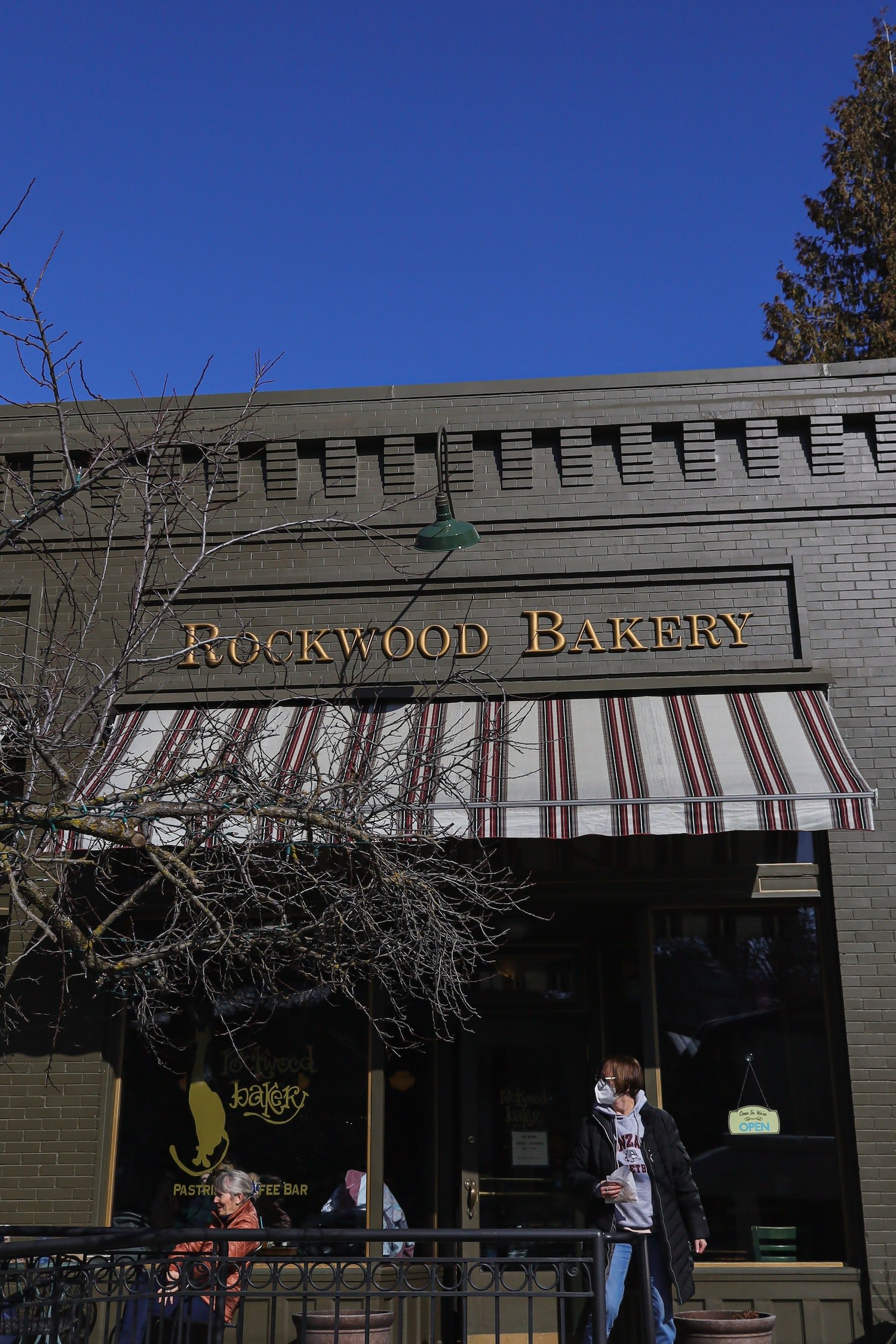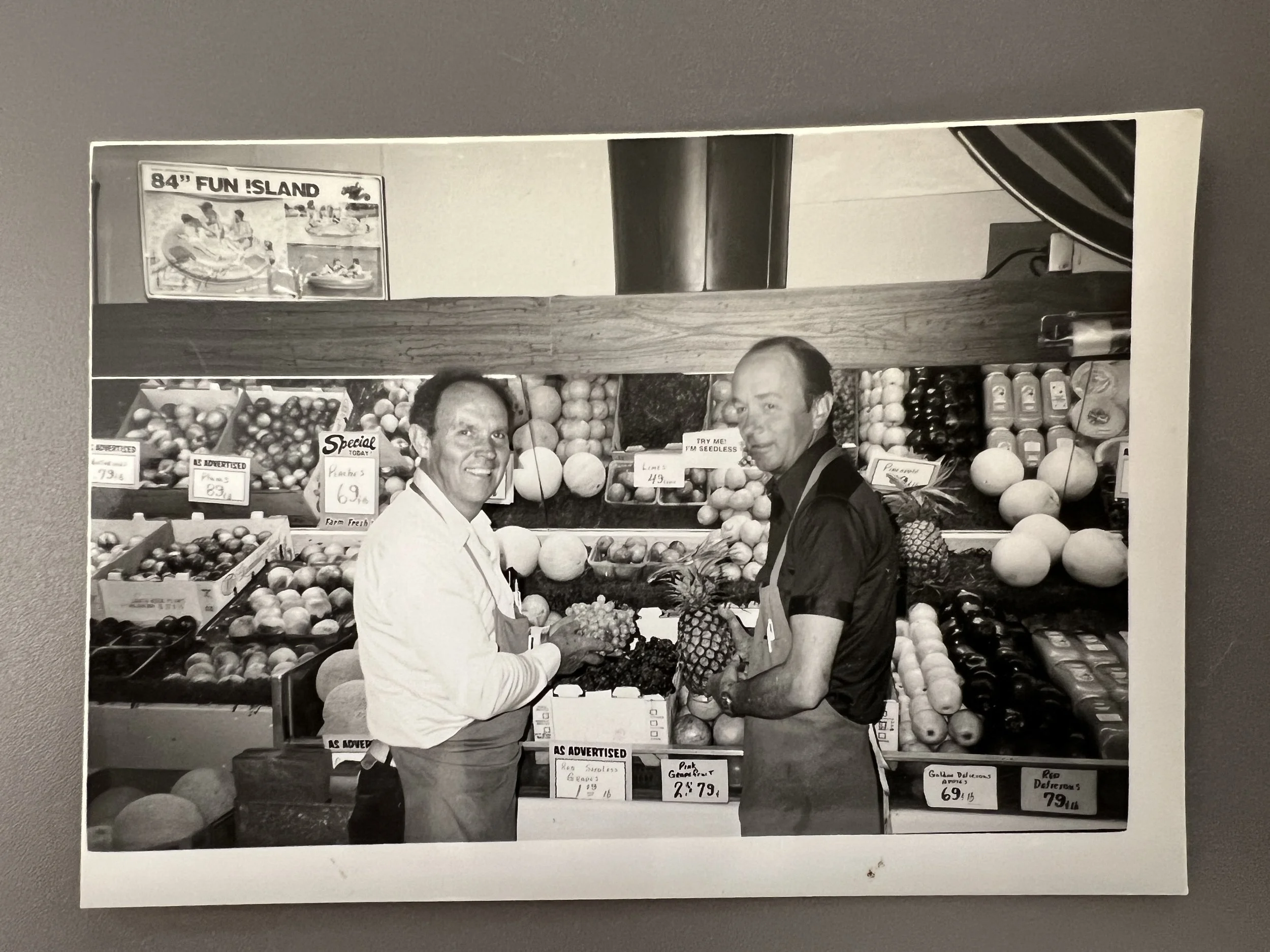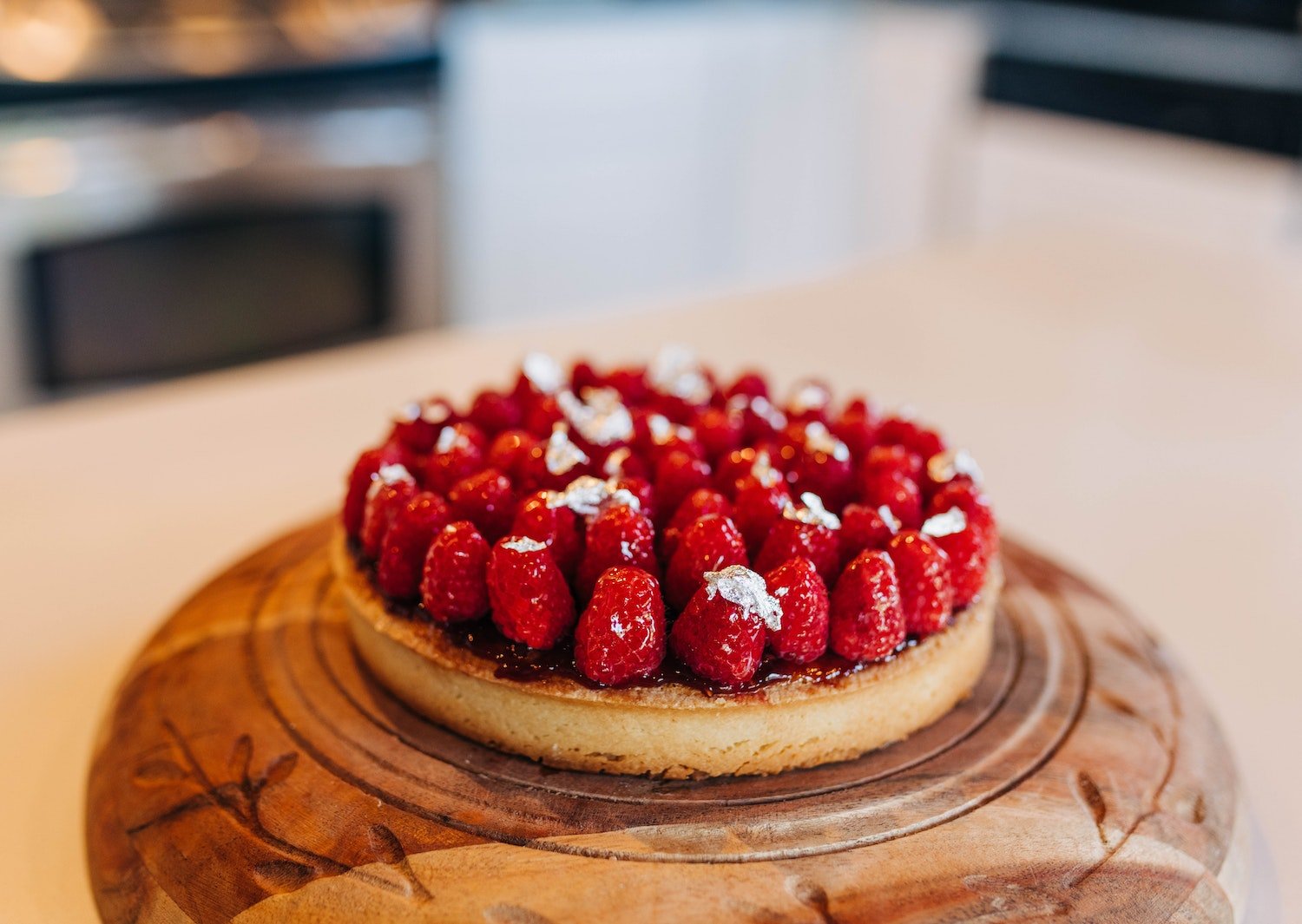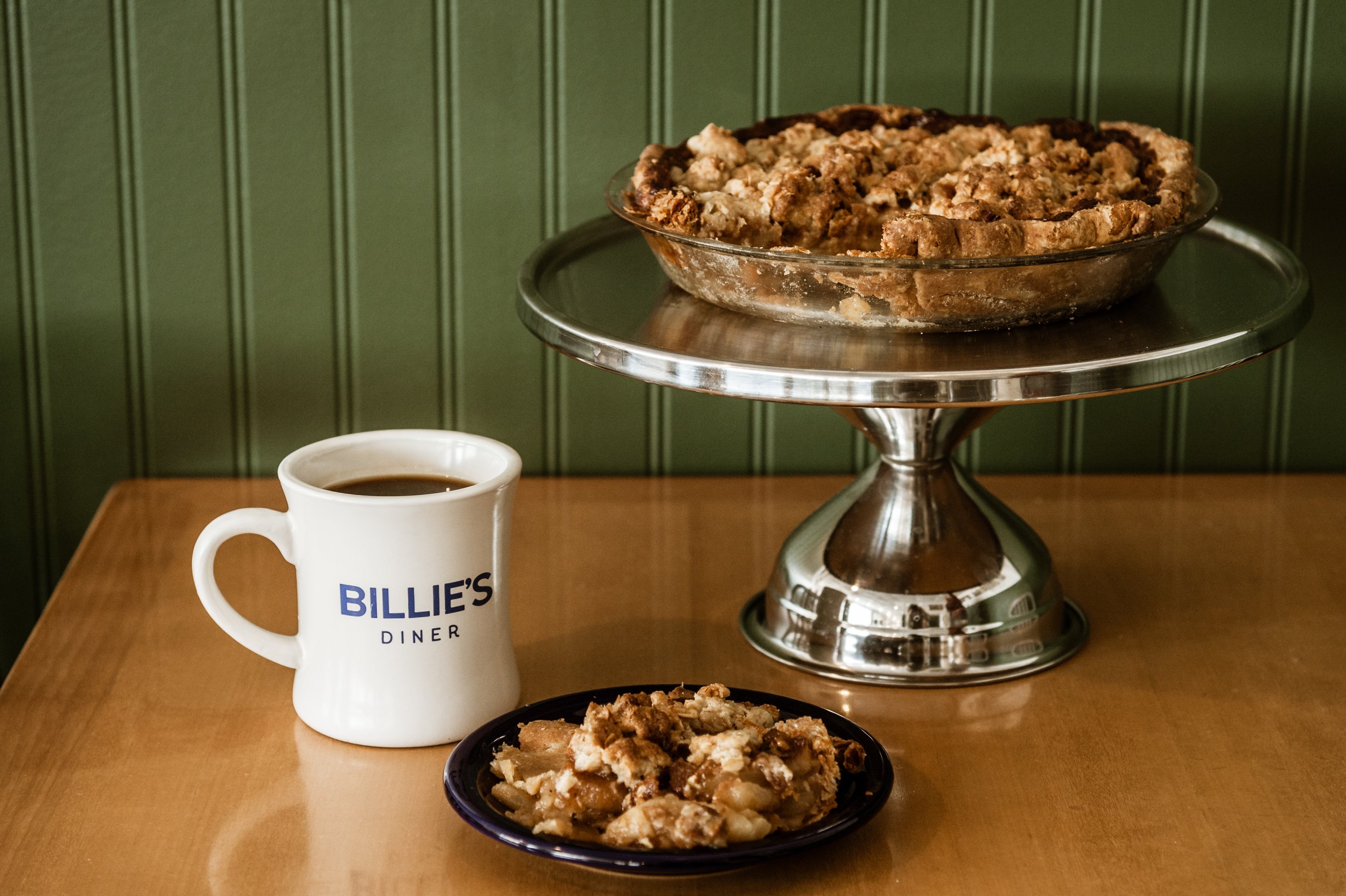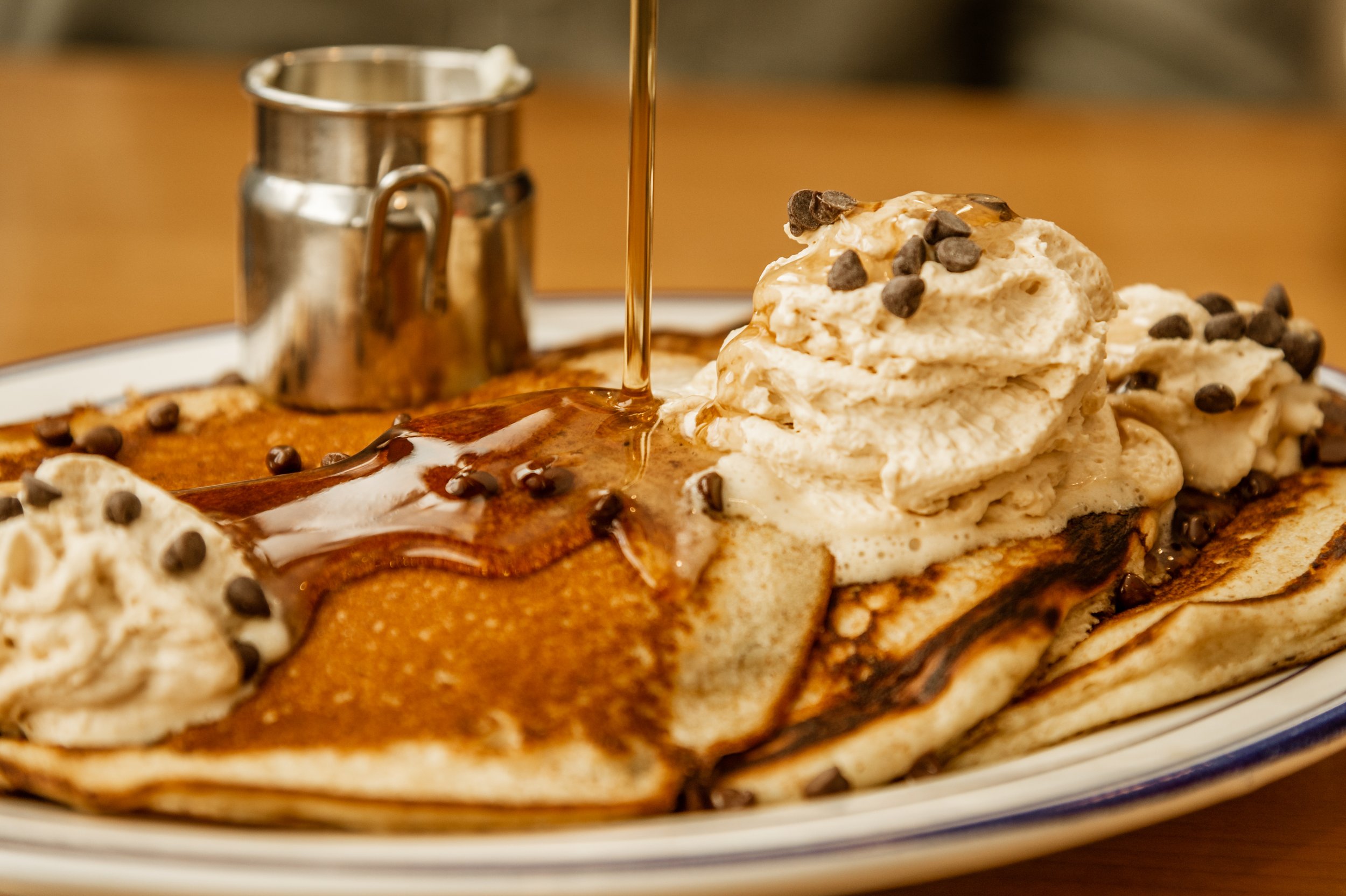A Century of Community: The History of Rockwood Bakery, a South Hill Staple
A Century of Community: The History of Rockwood Bakery, a South Hill Staple
BY CARA STRICKLAND
PHOTOS BY DAMIEN KINGJust a short walk from Manito Park, there’s a place you’ve probably visited—Rockwood Bakery, a bustling community hub, always abuzz with activity.
Now they are known for luscious baked goods, creamy quiche and handcrafted coffee drinks, but did you know that the building once housed another business focused on food and community?
In 1912, the building that would become Rockwood Bakery was built to house a neighborhood grocery store called Rockwood Market. Even the park was a fairly new phenomenon and the South Hill was just coming into its own. A local grocery store a walkable distance from home at that time was more than a luxury, it was a necessity.
Two owners manned the store until George Creighton came on the scene in 1964. Creighton had been in the grocery business for twenty years, working for another store. “I thought I would like to have one for my own,” he told me.
Creighton took inspiration from the basic neighborhood grocery store model. He focused on adding specialty items that customers might not be familiar with as well as a full-service meat counter with butchers who would cut meat to order or age it for you. At that time, that sort of service was uncommon in the area. Creighton remembers a large store downtown with butchers but no one on the South Hill. “Most things were in place,” he said, modestly. “We just made them better.”
In the early 1970s, Creighton added his own touch to the market’s name, changing it to George’s Rockwood Market until it closed in the very late 1990s.
Another stand-out feature was the local delivery service. Creighton employed two delivery boys (his sons at one point), and they turned around grocery orders for mostly regular customers the same day—another rarity at that time.
He enjoyed the community the store brought, getting to know the regular customers and having camaraderie with the employees.
Happy with what he’d accomplished, Creighton retired, mostly, in the mid-1990s, selling the business to a long-time employee. He had seen the way things were going—supermarkets were becoming more popular, leaving less room for small grocery stores. Creighton stayed on to help the new owner get going, but things didn’t go as well for him and eventually the business closed.
In 1998, 29-year-old Kammy Magnuson was working as a professional baker after attending the Culinary Institute of America (of California) and getting a degree in accounting—perhaps the perfect background for a small neighborhood bakery owner.
Friends of Magnuson’s family learned that the market building was coming up for sale, so she took out a huge loan and jumped headfirst into a complete renovation.
“I thought we’d just paint,” said Magnuson. “But we ended up needing to take it down to the studs with new electrical and plumbing, even an added partial basement.”
Drawing inspiration from all the time Magnuson spent studying in coffee shops as a student, the interior was transformed from the store people were familiar with to a hip coffee shop with walls in such a scandalous red it got everyone talking. She had glimpsed the wine-red wall color at a restaurant in Seattle and it stuck with her until she had a place to put it up herself.
When the bakery finally opened, nine months after renovations began, everyone flooded in to see what had changed. Magnuson had sourced all of the furniture from antique stores and markets, trying to bring the furnishings closer to the original 1912 era of the building.
She put up vintage paintings and prints in gilded frames, which were beautifully set off by the red walls. She added a front porch area and ramp, which she’d pictured getting the most use from mothers with strollers enjoying walks through the nearby park.
In the beginning, the bakery only served coffee and pastries, ham and cheese croissants and quiche their sole savory options. About five years in, they added more lunch items. By then, they were a South Hill staple and meeting place for many.
It turned out to be a meeting place for Magnuson as well—romantically enough, her second customer became her husband. She told me that he would come and sit on the patio with his dog—apparently, a surefire way to get girls.
Although I was young when the bakery first opened, I remember some of the conversations around it. Would there still be parking in the neighborhood? Could anything replace the timeless market that had been there before? What was up with those red walls? But now, it’s almost as if it’s always been there, blending seamlessly into a community by offering excellent hospitality and croissants that shatter in your mouth.
But there are still at least two people with memories mingling together when they enter the building.
For George Creighton, visiting the bakery was a touching experience, even though they’d remodeled it so completely. Though he’s not getting out much anymore, he found it moving to experience the bustling culture of a building where he’d spent 28 years of his life.
For Kammy Magnuson, there’s a blending of the business she started as an ambitious baker in her late 20s with the little girl who used to visit George’s Rockwood Market for candy.
The store and the bakery might not be the same, but they have managed to maintain the same heart: excellent service and craftsmanship, a sense of neighborhood and community, and an emphasis on what is most delicious.

